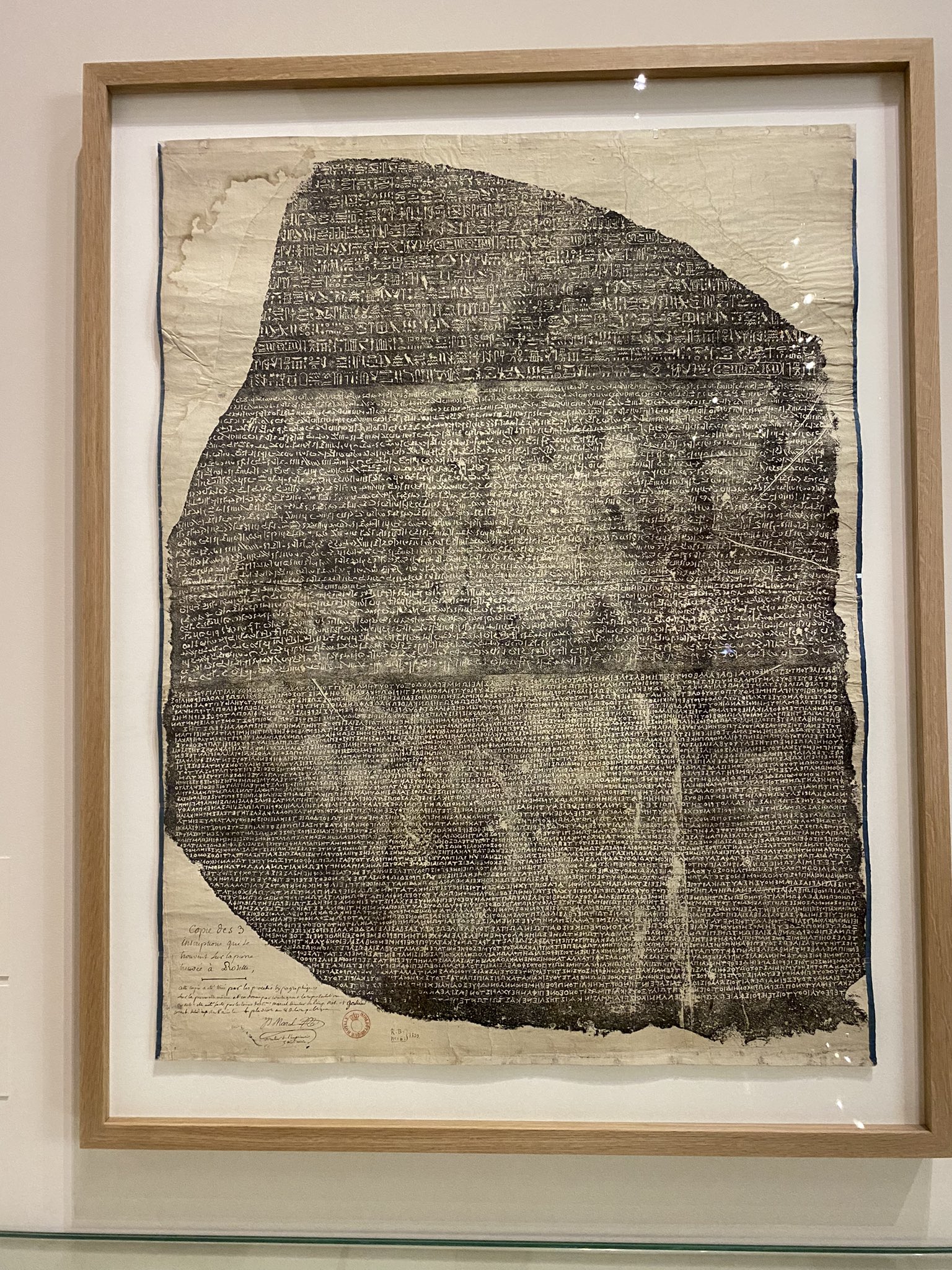CAIRO – 25 May 2022: The British Museum houses unique ancient Egyptian artifacts, most notably the Rosetta Stone, which was discovered in Rosetta by chance by Napoleon's army, when they were digging to build the foundation of a fortress near the town of Rashid in the Nile Delta in July 1799.
After the defeat of Napoleon, the stone was handed over to Britain under the terms of the Treaty of Alexandria in 1801, in addition to other antiquities found by the French. The stone was shipped to England, arrived at Portsmouth in February 1802, and was soon displayed in the British Museum.
The stone was copied after that and placed in several museums. How many copies were there and did Champollion decipher the stone using a copy or the original piece?
Director of the Bibliotheca Alexandrina Archaeological Museum, Egyptologist Hussein Abdel Basir, explained that many copies were made of the Rosetta Stone. The Egyptian Museum in Tahrir houses a distinct copy, in addition to a 100-year-old copy found in the Antiquities Museum of the Library of Alexandria, and another copy in the Museum of Manuscripts in Alexandria.

Abdel Basir pointed out that Champollion conducted his research to decipher the Rosetta Stone on copies of the images and not on the original piece housed in the British Museum. These copies were previously sent to a number of scholars before they were sent to Champollion, namely to Thomas Young, Ibn Wahshiyya, Dhul-Nun al-Misri, and Athanasius Kircher. Studies were conducted on those images.
Champollion was a lover of history and studied it thoroughly. He studied the Eastern and Coptic languages at the hands of the great scholars of his time, and taught history for a period of time, then traveled to Paris to work as the first curator of the Egyptian collection at the Louvre. He also held the position of professor of Egyptian antiquities at the Collège de France, and he developed a lexicon in the Coptic language.
Champollion was able to decipher the ancient Egyptian language using the Rosetta Stone, which was discovered during the French campaign against Egypt. This opened the door to understanding the ancient Egyptian civilization, and establishing Egyptology in the most prestigious universities in Europe.
Champollion's achievement in deciphering the ancient Egyptian language in 1822 was not an easy matter. It came as a result of patience and long and exhausting research. He knew how to combine the flashes of light accomplished by Egyptologists before him into a colossal discovery.
Champollion's effort did not stop there; he came to Egypt to continue his research and discoveries of the treasures of the Pharaonic civilization. He lived in Egypt for a year and a half, during which he did not stop excavating for Pharaonic antiquities. He conducted a systematic survey of the inscriptions and writings on the monuments, and compiled the book "Antiquities of Egypt and Nubia" about his observations.
When he returned to Paris, he was appointed to the position of professor of Egyptian antiquities, but he resigned, and devoted the rest of his life to developing a book on Egyptian grammar, which he was able to complete before his death in 1832.
Comments
Leave a Comment